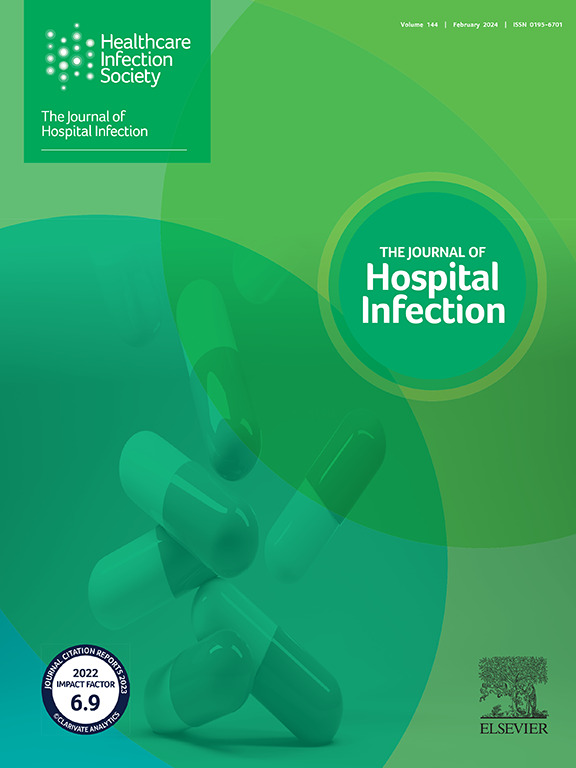住院患者合理使用抗生素的质量指标:2016-2022年意大利两次全国调查结果
IF 3.9
3区 医学
Q1 INFECTIOUS DISEASES
引用次数: 0
摘要
背景:为解决其高抗菌素耐药性(AMR)和抗生素消费率问题,意大利于2017年推出了一项对比AMR (PNCAR)的国家行动计划。目的:通过适当使用抗生素的指标,调查意大利抗生素使用、处方做法和抗生素耐药性率的趋势。方法:根据ECDC方法和定义,于2016年和2022年进行2次点状患病率调查(PPSs)。定义并测量适当使用抗生素的指标。计算特定病原体-药物联合的抗生素使用流行率和AMR率。为了考虑潜在的混杂因素,采用倾向评分匹配方法,使用患病率比(PRR)比较两个PPS版本的结果。结果:2016年和2022年,共纳入140家医院28991例患者和325家医院60403例患者。患者的特征保持稳定,但患者越来越多地暴露于侵入性手术。总体抗生素使用率从43.51下降到41.52 (PRR 0.95, 95%可信区间,CI 0.94 - 0.97, p 1天)从55.99%下降到52.15% (PRR 0.94, 95% CI 0.90 - 0.98, p)。结论:本研究提供了国家层面的处方活动图谱,并定义了可测量的质量指标,通过该指标确定了处方实践的优势和改进领域。本文章由计算机程序翻译,如有差异,请以英文原文为准。
Quality indicators for appropriate inpatient antibiotic use: results from two national surveys in Italy, 2016–2022
Background
To address its high antimicrobial resistance (AMR) and antibiotic consumption rates, Italy introduced a national action plan to contrast AMR (PNCAR) in 2017.
Aim
To investigate trends in antibiotic use, prescribing practices, and AMR rates in Italy through indicators of appropriate antibiotic use.
Methods
Two point prevalence surveys (PPSs), according to The European Centre for Disease Prevention and Control (ECDC) methods and definitions, were conducted in 2016 and 2022. Indicators of appropriate antibiotic use were defined and measured. Antibiotic use prevalence and AMR rates for specific pathogen–drug combinations were calculated. To account for potential confounding factors, a propensity score matching approach was applied to compare the results of the two PPS editions using prevalence rate ratio (PRR).
Results
Overall, 28,991 patients from 140 hospitals and 60,403 patients from 325 hospitals were included in 2016 and 2022, respectively. Patient characteristics remained stable, but patients were increasingly exposed to invasive procedures. The overall prevalence of antibiotic use decreased from 43.51 to 41.52 (PRR 0.95, 95% confidence interval, CI 0.94–0.97, P<0.001). Improvements in some prescribing practices were identified: the proportion of surgical prophylaxis lasting >1 day decreased from 55.99% to 52.15%, (PRR 0.94, 95% CI 0.90–0.98, P<0.001) and the proportion of culture-guided hospital infection treatments increased from 33.68% to 48.57% (PRR 1.30, 95% CI 1.22–1.38, P<0.05). Conversely, a significant rise in the proportion of last line/broad-spectrum agents was recorded for most indications.
Conclusion
This study provided a mapping of prescribing activity at national level, and defined measurable quality indicators, through which strengths and areas for improvement in prescribing practices were identified.
求助全文
通过发布文献求助,成功后即可免费获取论文全文。
去求助
来源期刊

Journal of Hospital Infection
医学-传染病学
CiteScore
12.70
自引率
5.80%
发文量
271
审稿时长
19 days
期刊介绍:
The Journal of Hospital Infection is the editorially independent scientific publication of the Healthcare Infection Society. The aim of the Journal is to publish high quality research and information relating to infection prevention and control that is relevant to an international audience.
The Journal welcomes submissions that relate to all aspects of infection prevention and control in healthcare settings. This includes submissions that:
provide new insight into the epidemiology, surveillance, or prevention and control of healthcare-associated infections and antimicrobial resistance in healthcare settings;
provide new insight into cleaning, disinfection and decontamination;
provide new insight into the design of healthcare premises;
describe novel aspects of outbreaks of infection;
throw light on techniques for effective antimicrobial stewardship;
describe novel techniques (laboratory-based or point of care) for the detection of infection or antimicrobial resistance in the healthcare setting, particularly if these can be used to facilitate infection prevention and control;
improve understanding of the motivations of safe healthcare behaviour, or describe techniques for achieving behavioural and cultural change;
improve understanding of the use of IT systems in infection surveillance and prevention and control.
 求助内容:
求助内容: 应助结果提醒方式:
应助结果提醒方式:


